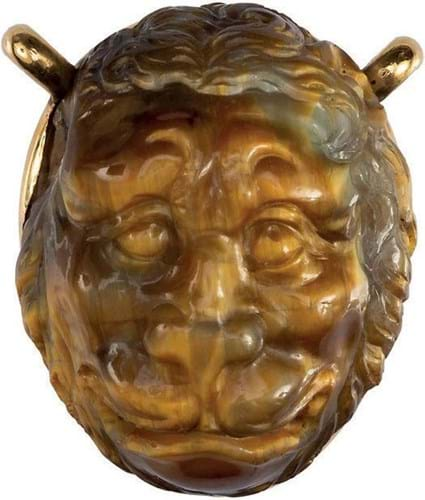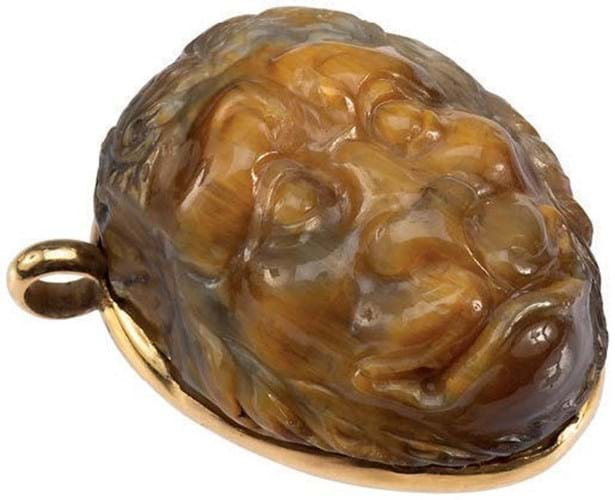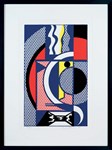
Carved from cat's eye c.1600 in Italy, probably in Milan, this lion's head gem is offered by Les Enluminures for $85,000.
The show, from March 30 to May 9, pitches the gem at $85,000. The combined weight of the price tag and a whole exhibition might be a lot to pin on the small stone – but the gallery argues that there is plenty of strength in this little work.
Part of the interest is intrinsic. Carved into cymophane (also known as tiger’s eye or cat’s eye), it depicts the head of a lion with a flowing mane.
It was carved c.1600 in Italy, probably in Milan, and is offered on a modern gold mount.
Small pupils and teeth are worked into the stone, which has a semi-transparent quality providing shifting palette from pale green to yellow to brown.
Extensive provenance

Carved from cat's eye c.1600 in Italy, probably in Milan, this lion's head gem is offered by Les Enluminures for $85,000.
Then there is its extensive and well-documented early provenance.
Its first known owner was Baron Philipp von Stosch (1691-1757), a Prussian antiquarian with a collection of more than 3500 gems.
He hired draughtsmen to record key pieces, and one surviving image by Pier Leone Ghezzi with Hieronymus Odam depicts the gem in question. It then passed to gem-engraver and medalist Johann Lorenz Natter (1705-63), who illustrated it in his album Museum Britannicum.
Eventually it made its way into the collection of George Spencer, 4th Duke of Marlborough (1739- 1817), who had the largest and most important assemblage of engraved gems in the 18th century.
The whole collection was sold in 1875 and dispersed in 1899. The lion is not one of the elusive ‘lost’ gems from the collection and has appeared on the open market several times since.
Such pieces often hold museum interest, but also draw private collectors at the top end of the market.














